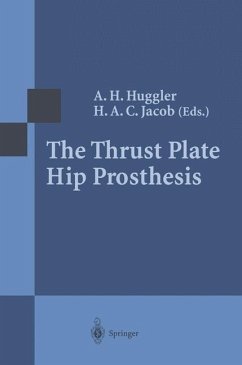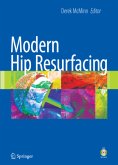As is probably the case with all successful innovations, the unique design of the thrust plate prosthesis (TPP) was not born of a sudden fancy for a radically different hip joint replacement, but emerged from elaborate biomechanical investigations on the loosening of conventional, intramedullarly anchored hip prosthesis shafts. In the 1970s, hip revisions due to loosening of the prostheses became a burden to patients not only physically and psychologically but also economically. This meant that it also became a matter of daily concern to the orthopaedic surgeon, who then had to cope with new, previously unknown problems. Loosening processes were de tected within 5 years of implantation in up to 25% of cases. While implant loosenings were considered to be the result of incorrect handling of materials, we felt that a number of details still had to be considered in regard to the behavior of the entire bone-prosthesis complex and the action of mechanical forces.








